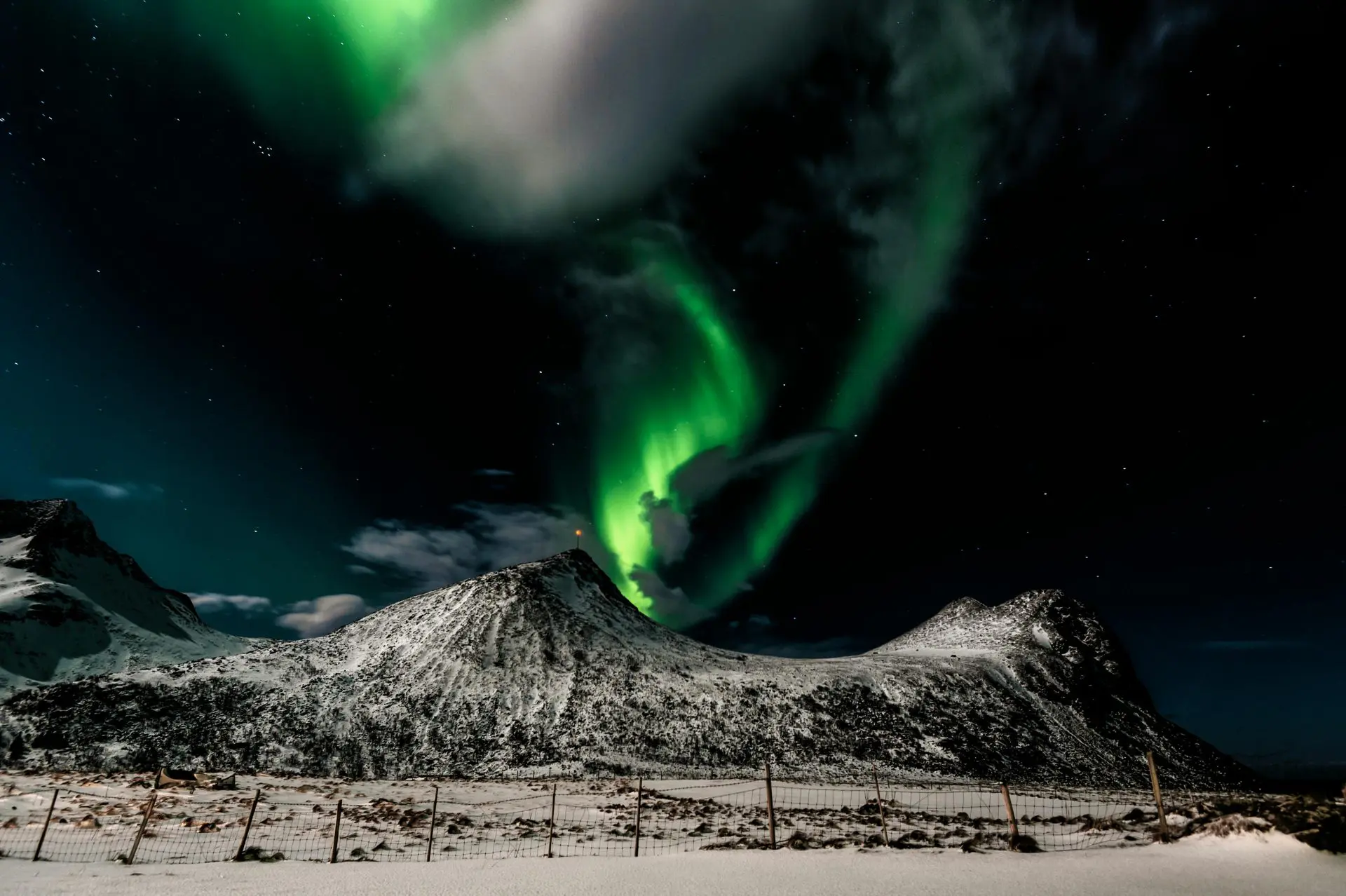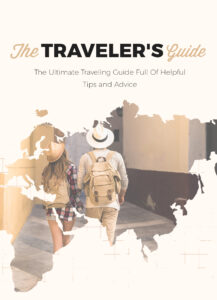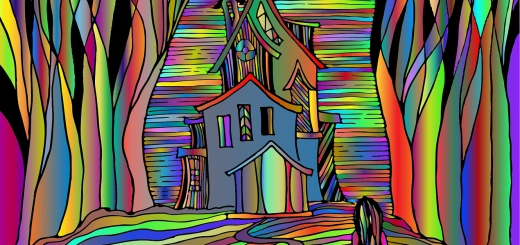How Traveling Through History Shapes Cultural Identity

Looking for more amazing products? Check out our online store and explore our collection here! Happy shopping!
Before diving in, please note: This post is for informational purposes only. If you’d like to know more about how we approach topics, feel free to check out our friendly Disclaimer Page.
Hey there, amazing readers! 
We’re committed to delivering quality posts, and your support (even just sticking around despite the ads) means everything to us. So, bear with us, and thanks for helping us keep the good vibes rolling. Now, on to the fun stuff!
TRANSLATE BUTTON AT THE END OF THE ARTICLE
A Quick Overview
Traveling is an adventure that extends beyond the mere act of moving from one place to another.
It’s a journey through time.
Each destination serves as a portal, connecting us to stories, traditions, and experiences that have shaped our world and our identities.
When we travel, we don’t just visit; we engage with the past, allowing it to influence who we are today.
In this article, we’ll explore how traveling through history shapes our cultural identity.
From ancient ruins to local traditions, we’ll uncover how every experience molds our understanding of ourselves and our place in society.
The Importance of Traveling Through Time and Space
Traveling opens doors, both literal and metaphorical.
It allows us to stretch our boundaries and blend our experiences with those of others.
When I first wandered through the cobbled streets of Rome, I felt like a character in a historical novel.
Each step echoed tales of emperors and gladiators.
This connection to history fosters a deeper appreciation for our diverse cultural backgrounds.
When we travel, we become part of a living history.
We learn about events that shaped nations and peoples.
Imagine standing in front of the Great Wall of China.
It’s a tangible reminder of human ingenuity and resilience.
You realize that history is not just a series of dates and events; it’s about the people who lived through it.
Travel helps us understand the present better.
By examining the past, we can see the roots of our cultural norms, values, and beliefs.
For instance, visiting the pyramids of Egypt reveals insights into ancient societies and their influence on modern-day culture.
These experiences broaden our perspectives and create an understanding of our shared human narrative.
Through travel, we also develop empathy.
Witnessing the remnants of a world war or a cultural festival can evoke powerful emotions.
It reminds us of our interconnectedness and the shared struggles of humanity.
This emotional engagement helps shape our values and beliefs, enriching our cultural identities.
Moreover, traveling through different eras encourages curiosity.
When we visit historical museums or participate in reenactments, we cultivate a desire to learn.
This pursuit of knowledge enhances our appreciation for cultural heritage, making us more informed global citizens.
In an age where misinformation is rampant, this quest for understanding is critical.
We often carry back more than souvenirs; we bring home stories and insights that alter our worldviews.
Each trip leaves an indelible mark on our hearts and minds, shaping our identities in profound ways.
Discover "The Traveler’s Guide: Your Ultimate Companion for Every Adventure
"
So, let’s dive deeper into how these experiences mold our cultural fabric.
Discovering the Roots of Our Cultural Heritage
Cultural heritage is like a fine tapestry woven through generations.
When we travel, we can trace the threads of our ancestors and their stories.
Each destination offers clues to the rich history that shapes our identities.
For instance, visiting places like Stonehenge or the Acropolis can spark curiosity about ancient civilizations.
I remember standing in front of the Parthenon, marveling at its architectural brilliance.
It felt like stepping into a time capsule.
The historical significance of such sites provides context for our present-day beliefs and practices.
Engaging with local communities during travels allows us to unearth hidden stories.
I once visited a small village in Italy where traditions had been preserved for centuries.
The locals shared tales of their ancestors, illuminating customs I’d never known.
These authentic experiences deepen our connection to our cultural roots.
Participating in workshops or traditional crafts helps to revive age-old techniques.
Whether it’s pottery in Greece or weaving in Peru, engaging in these activities fosters a sense of belonging.
I often find that creating something with my hands, rooted in tradition, connects me to a larger lineage.
Additionally, exploring historical landmarks often leads to discovering personal narratives.
The historical landscape can echo our family stories, linking us to the past in unexpected ways.
For example, a visit to a battlefield may remind us of relatives who fought there, making history feel personal.
Traveling through historical contexts also raises awareness about the preservation of cultural heritage.
Many sites face threats from modernization or neglect.
Understanding this context makes us advocates for protecting these treasures, ensuring future generations can experience their significance.
At the end of the day, our cultural heritage is a living entity, constantly evolving.
Travel allows us to learn about its evolution and how it reflects our identities.
By discovering these roots, we gain a sense of pride and responsibility to honor and share our heritage.
Immersive Experiences: The Power of Historical Sites
Historical sites are more than just structures; they are stories etched in stone.
Walking through these sites offers immersive experiences that textbooks simply can’t replicate.
Have you ever stood in a castle and imagined royal banquets?
Or watched a reenactment and felt the adrenaline of battle?
These experiences ignite our imaginations.
Each site has a unique narrative.
For instance, visiting the ruins of Machu Picchu feels like stepping into a mystical world.
The Incan civilization’s ingenuity is evident in every stone.
I found myself pondering the lives of those who walked these paths centuries ago.
Engagement with history creates a sense of continuity.
When you walk through the Roman Forum, you grasp the pulse of an empire at its peak.
You can almost hear the voices of politicians and philosophers debating.
This connection to the past enriches our understanding of the present.
Moreover, visiting these sites often involves local guides who share personal stories and insights.
Their passion brings history to life in a way that a guidebook simply can’t.
I recall a guided tour through the ruins of Pompeii, where the guide’s storytelling transported us to a day before the eruption of Vesuvius.
It was both haunting and enlightening.
These historical encounters also encourage reflection.
Standing in silence at a memorial forces us to confront humanity’s darker chapters.
It inspires gratitude and a commitment to fostering peace.
This reflective aspect of travel shapes our identities, guiding our values and actions.
The sensory experiences associated with historical sites are equally impactful.
The scent of ancient wood in a medieval church or the sight of intricate frescoes can leave lasting impressions.
These details become part of our narratives, influencing our cultural identity.
In essence, historical sites serve as a bridge between the past and present.
They provide context for our cultural identities, reminding us of where we come from and where we might be going.
Each visit becomes a piece of the puzzle that forms our understanding of the world.
How Local Traditions Enhance Our Travel Experiences
Local traditions are the lifeblood of culture.
They paint a vibrant picture of a community’s identity and values.
When we travel, immersing ourselves in these customs opens doors to deeper connections and enriching experiences.
One of my favorite travel memories involves participating in a traditional tea ceremony in Japan.
The meticulous rituals and graceful movements made me appreciate the cultural significance attached to something as simple as sharing a drink.
I felt honored to be part of such a profound tradition.
Festivals are another fantastic way to experience local culture.
I’ve attended colorful parades and cultural celebrations that immerse travelers in the heart of local life.
Whether it’s Diwali in India or Carnival in Brazil, these events are overflowing with history, joy, and community spirit.
They invite us to celebrate alongside locals and create unforgettable memories.
Food traditions also play a vital role in cultural identity.
Each dish tells a story, reflecting the land’s history and people.
While traveling in Mexico, I learned about the significance of mole in celebrations.
Cooking together with locals allowed me to connect with their heritage on a personal level.
While exploring these traditions, we often engage with the community.
Whether it’s joining in on a dance or helping with a local charity, these interactions deepen our understanding of their culture.
It’s like piecing together a jigsaw puzzle—each moment adds clarity to the bigger picture.
Local traditions also foster a sense of belonging.
Sharing experiences with locals creates bonds that transcend language barriers.
I remember laughing and dancing with strangers in a Scottish ceilidh.
Those moments filled my heart with warmth and connection.
Moreover, these traditions often have educational components.
Engaging with artisans or learning traditional crafts reveals the skills passed down through generations.
It’s a reminder that culture is not a static entity but a living expression of creativity and resilience.
In this way, local traditions are not just entertaining; they shape our cultural identities.
They challenge our assumptions and inspire us to embrace diversity.
Each tradition we encounter enriches our global perspective and fosters a deeper appreciation for humanity.
The Role of Food in Shaping Cultural Identity
Food is a universal language.
It connects people, tells stories, and reflects cultural identity.
When we travel, indulging in local cuisines is one of the most delightful ways to immerse ourselves in a culture.
Every dish carries history.
For instance, consider the significance of a traditional dish like paella in Spain.
It’s not just a meal; it represents the agricultural bounty of the region and the influences of different cultures.
Eating it in its homeland is a sensory experience that transcends time.
Cooking classes are a fun way to delve into culinary traditions.
During a trip to Thailand, I joined a cooking class that taught me the art of balancing flavors.
The instructor shared stories about her grandmother’s recipes, linking me to her family’s heritage.
This connection made the food even more special.
Food also brings people together.
I remember sharing a meal with a family in Morocco, surrounded by laughter and lively conversation.
It wasn’t just about the food; it was about the warmth and hospitality that permeated the experience.
Such moments create lasting bonds and enrich our understanding of cultural identity.
Street food is another fantastic way to explore local flavors.
Each vendor has a story, and their food often reflects their cultural heritage.
I’ve enjoyed mouthwatering dumplings in Beijing and savory crepes in Paris, each bite telling me something about the local culture.
Moreover, food traditions often accompany rituals and celebrations.
From Thanksgiving in the U.S. to Lunar New Year in China, these events are steeped in history.
Participating in these meals creates a sense of belonging and continuity, deepening our connection to cultural identity.
Additionally, food has the power to challenge perceptions.
Traveling in India, I encountered diverse culinary practices that expanded my understanding of vegetarianism and its cultural significance.
Engaging with local food practices fosters empathy and broadens our worldviews.
Ultimately, food is more than sustenance; it’s a reflection of culture.
When we travel, savoring local cuisines helps us appreciate the intricacies of identity.
Each meal becomes a lesson, and every recipe a narrative of a community’s story.
Festivals: A Celebration of History and Community
Festivals are vibrant expressions of cultural identity.
They celebrate history, traditions, and community spirit in one spectacular package.
Throughout my travels, I’ve experienced the joy and energy of festivals that beautifully illustrate the essence of a culture.
While attending the Holi festival in India, I felt an overwhelming sense of unity.
The air filled with colors and laughter as people celebrated the arrival of spring.
It was a reminder of how festivals can transcend social barriers and foster connections.
Many festivals are deeply rooted in historical events.
For example, the Day of the Dead in Mexico honors ancestors and celebrates the cycle of life.
Participating in this festival allowed me to reflect on my own family history and understand the significance of remembrance in their culture.
Festivals often involve rituals and performances that share stories through art.
Whether it’s traditional dances, music, or theatrical performances, these expressions carry cultural narratives.
I remember watching a traditional Maori haka in New Zealand, feeling the energy of centuries of tradition echoing through every movement.
Food plays a significant role in these celebrations.
Festivals are often centered around communal meals, showcasing local flavors and culinary traditions.
Sharing dishes with locals during these occasions creates bonds and fosters a sense of belonging.
Moreover, festivals provide insight into the values and beliefs of a culture.
The rituals and practices associated with celebrations highlight what communities cherish most.
During Eid in Turkey, the emphasis on generosity and hospitality was palpable, enriching my understanding of their cultural identity.
Engaging with locals during festivals also allows for the sharing of stories.
Hearing personal anecdotes adds depth to historical narratives, making the experience feel intimate.
It’s this storytelling aspect that transforms festivals into a collective memory.
Ultimately, festivals are a celebration of life.
They remind us of our shared humanity and the beauty of diversity.
Through these experiences, we gain insight into cultural identities, creating cherished memories that last a lifetime.
Learning History Through Art and Architecture
Art and architecture are windows into the past.
They tell tales of civilizations, beliefs, and cultural evolution.
Traveling allows us to appreciate the artistry and craftsmanship that reflects a society’s values and history.
Visiting renowned museums is a rewarding way to engage with cultural heritage.
While exploring the Louvre in Paris, I was captivated by the Mona Lisa, but it was the historical context of each artwork that truly fascinated me.
Understanding the stories behind the brushstrokes enhances our appreciation for the artists’ messages.
Beyond museums, architecture serves as a testament to a culture’s identity.
From the grandeur of the Taj Mahal to the simplicity of traditional Japanese tea houses, each structure embodies the aesthetics and values of its time.
I marveled at the intricate details of Gothic cathedrals, feeling the weight of history in every archway.
Street art also offers a glimpse into contemporary cultural narratives.
Murals and graffiti can address social issues, celebrate heritage, and provoke thought.
I once stumbled upon a mural in Berlin that depicted the city’s tumultuous history, reminding me that art is a powerful medium for storytelling.
Architecture often reflects the climate, available resources, and cultural practices.
During my visit to the adobe structures of Taos Pueblo in New Mexico, I learned how the community adapted their building techniques to the environment.
This connection between culture and landscape is a reminder of our dependence on nature.
Artistic expressions often evolve over time, reflecting the changing societal norms and values.
Engaging with local artisans during my travels has offered insight into these transformations.
I remember sketching pottery designs with a local artist in Mexico, learning how traditions adapt while maintaining their essence.
Additionally, historical architecture can stir emotions.
Standing in front of the ruins of an ancient temple can evoke a sense of awe.
These moments remind us of the endurance of human spirit and creativity, shaping our understanding of cultural identity.
Ultimately, learning about history through art and architecture enriches our travel experiences.
Each piece, whether a painting or a building, holds a story waiting to be discovered.
These encounters deepen our appreciation for cultural heritage and the shared narratives that define us.
The Influence of Ancient Civilizations on Modern Culture
Ancient civilizations laid the groundwork for modern cultures.
Their innovations, philosophies, and practices continue to influence our lives today.
Traveling to sites of historical significance offers a chance to trace these connections.
Consider the contributions of the ancient Greeks.
Their philosophies on democracy, art, and science still resonate today.
Visiting the ruins of Athens, I felt a sense of admiration for their intellectual legacy.
It’s astonishing how their ideas continue to shape contemporary society.
Similarly, ancient Egypt’s advancements in mathematics and engineering laid the foundation for future innovations.
Standing before the Great Pyramid, I marveled at the architectural prowess that has endured through millennia.
It’s a testament to human ingenuity that inspires us even today.
The influence of ancient civilizations extends to language and culture.
Many modern languages have roots in ancient tongues.
While traveling, I often hear phrases that echo historical languages, reminding me of our interconnectedness through communication.
Religious practices also trace back to ancient civilizations.
Many contemporary religions draw inspiration from earlier beliefs and rituals.
Experiencing these traditions firsthand during my travels has provided insight into how spirituality shapes cultural identities.
Food customs have evolved, carrying remnants of ancient practices.
Ingredients and cooking methods from long ago continue to influence modern cuisines.
For instance, the use of spices in Indian cuisine is a nod to centuries of cultural exchange and trade.
Art and literature also reflect the impact of ancient civilizations.
Classic works continue to inspire contemporary artists and writers.
During a visit to the British Museum, I was struck by how ancient artifacts influenced modern storytelling and creative expression.
Engaging with these historical threads during travel fosters a sense of continuity.
We become part of a larger narrative that transcends time and space.
Understanding the influence of ancient cultures enriches our identity and appreciation for our shared heritage.
Ultimately, the threads that connect us to ancient civilizations are woven into the fabric of our modern lives.
Each journey creates an opportunity to explore these connections, shaping our understanding of who we are today.
Connecting with Locals: Stories That Shape Identities
Traveling is often about the connections we forge with locals.
These interactions can profoundly shape our understanding of a culture and influence our identity.
The stories we share and hear create bonds that last a lifetime.
During a trip to Greece, I met an elderly woman who shared stories of her childhood in a small village.
Her tales of resilience during tough times painted a vivid picture of her community’s spirit.
Listening to her, I felt a sense of camaraderie and respect for her experiences.
Local stories often provide context to historical events.
I remember engaging with a guide in Prague who shared the impact of communism on his family’s life.
Hearing firsthand accounts humanized history in a way that textbooks never could.
It reminded me that every historical narrative has a personal dimension.
Participating in community events also fosters connections.
Whether it’s a local market, cooking class, or cultural festival, these experiences encourage interaction.
I participated in a dance at a local festival in Bali, and the laughter and joy created bonds that transcended language barriers.
Moreover, locals often provide insights into daily life and cultural practices.
I once visited a family in Turkey who invited me to join them for dinner.
Through their hospitality, I learned about their traditions and the significance behind their meals.
These intimate moments create lasting memories and deepen our understanding of cultural identity.
Storytelling is a powerful tool for connection.
Many cultures have oral traditions that preserve history and values.
While exploring indigenous communities in Canada, I listened to elders share stories that conveyed wisdom and lessons learned over generations.
These narratives fostered respect for their heritage and traditions.
Local interactions can also challenge our assumptions.
Engaging in discussions about societal norms and values can broaden our perspectives.
I once conversed with a young artist in South Africa who shared his views on social justice through his art.
This exchange reshaped my understanding of contemporary issues.
Ultimately, connecting with locals enriches our travel experiences.
Their stories create a tapestry of cultural identity that weaves through our journeys.
As we share our narratives and listen to theirs, we become part of a larger human story.
Travel as a Tool for Cross-Cultural Understanding
Travel is an unparalleled tool for fostering cross-cultural understanding.
When we step outside our comfort zones, we open ourselves up to new perspectives.
Engaging with different cultures cultivates empathy, respect, and appreciation for diversity.
While traveling in Southeast Asia, I witnessed a cultural exchange that left a lasting impression.
I observed a community celebrating a traditional festival while welcoming tourists.
Their openness and hospitality transformed a simple visit into a shared celebration of culture.
Language barriers can sometimes feel daunting, but they often lead to unexpected connections.
During a trip to Brazil, I struggled with Portuguese but managed to communicate through gestures and smiles.
This experience taught me that understanding transcends words; it’s about shared humanity.
Travel also provides opportunities to challenge stereotypes.
Experiencing daily life in a different culture can dispel misconceptions.
I remember visiting a family in Egypt who invited me to share a meal.
Their warmth and hospitality shattered preconceived notions and fostered a genuine connection.
Participating in cultural exchanges, such as community service projects, deepens our understanding.
Collaborating with locals on initiatives allows us to witness their challenges and triumphs firsthand.
I once volunteered in a school in rural India, where I learned about the educational challenges they faced.
This hands-on experience transformed my perspective.
Moreover, travel encourages reflection on our beliefs and values.
Engaging with diverse communities challenges us to examine our biases and assumptions.
It invites us to embrace complexity and understand that every culture is multifaceted.
Sharing our own stories during travels also fosters cross-cultural understanding.
By being open about our backgrounds, we invite others to do the same.
Each interaction becomes an opportunity to learn from one another, creating a rich tapestry of experiences.
Ultimately, travel equips us with the tools to navigate an increasingly interconnected world.
By fostering cross-cultural understanding, we contribute to a more compassionate and inclusive society.
Each journey becomes a step toward greater awareness and appreciation for the mosaic of humanity.
The Impact of Historical Narratives on Personal Identity
Historical narratives shape our understanding of ourselves and our place in society.
When we travel, we encounter stories that resonate with our experiences, challenging our perceptions and influencing our identities.
While visiting the Auschwitz-Birkenau Memorial in Poland, I was overwhelmed by the weight of history.
The stories shared by guides and survivors illuminated the resilience of the human spirit.
This profound experience prompted me to reflect on the importance of remembrance in shaping our values.
Historical narratives can also inspire personal growth.
While exploring the civil rights movement in the U.S., I felt a deep sense of responsibility to advocate for justice.
The stories of those who fought for equality fueled my passion for social change, reminding me of the impact individuals can have on society.
Engaging with diverse historical perspectives broadens our understanding.
While traveling in South Africa, I encountered narratives that highlighted the complexities of apartheid.
Hearing personal accounts from both sides of the struggle challenged my assumptions and encouraged me to approach history with an open mind.
Moreover, historical narratives often intersect with our own family stories.
Visiting ancestral homelands can evoke emotions and foster a sense of belonging.
I discovered my great-grandparents’ journey during a visit to Ireland, connecting me to my roots and inspiring a deeper appreciation for my heritage.
Traveling through history also raises awareness of societal issues.
Learning about the impact of colonization in various regions prompts reflection on our responsibilities as global citizens.
It encourages us to advocate for justice and equity, shaping our identities in relation to the larger world.
Furthermore, historical narratives inspire creativity.
Many artists, writers, and musicians draw inspiration from the past.
Traveling to locations that influenced their work provides context and enriches our understanding of their creative journeys.
Ultimately, historical narratives shape our personal identities in profound ways.
Each story we encounter adds depth to our understanding of ourselves and our place in the world.
Through travel, we become active participants in a rich tapestry of history, influencing our values and actions.
Embracing Change: Evolving Identities Through Travel
Travel encourages us to embrace change and adapt our identities.
Each journey presents opportunities for growth, reflection, and transformation.
It challenges us to step outside our comfort zones and engage with the unfamiliar.
I vividly recall my first solo backpacking trip through Southeast Asia.
Initially daunting, it became a journey of self-discovery.
Navigating new cultures and environments helped me build confidence and adaptability.
I returned home with a broader perspective on life.
Travel teaches us to appreciate diversity.
Each culture offers unique perspectives on life, shaping our understanding of identity.
I found myself inspired by the communal values I observed in various cultures, prompting me to reevaluate my own beliefs and practices.
Moreover, travel exposes us to different ways of living.
Spending time in homes and communities around the world prompts reflection on our own lifestyles.
I remember feeling a sense of gratitude for the simplicity I encountered in rural villages.
It inspired me to prioritize meaningful experiences over material possessions.
Travel also fosters resilience.
The unexpected challenges we face while exploring new places teach us to adapt and overcome obstacles.
I once got lost in the labyrinthine streets of Venice, but it led me to discover hidden gems.
These moments of uncertainty encourage us to embrace spontaneity and uncertainty.
As we travel, we form connections with fellow travelers and locals.
These interactions often lead to new friendships that transcend borders.
I’ve formed bonds with people from various backgrounds, each enriching my understanding of identity and culture.
Ultimately, travel is a catalyst for personal evolution.
Each journey shapes our values, perspectives, and sense of self.
Embracing change through travel allows us to navigate the complexities of identity in a rapidly changing world.
We become more open-minded, empathetic, and connected to the diverse tapestry of humanity.
Conclusion
Traveling through history is an enriching journey that shapes our cultural identity.
From exploring ancient ruins to engaging with local traditions, each experience molds our understanding of ourselves and the world around us.
We discover our roots, celebrate diversity, and learn from the stories of others.
Each journey adds a chapter to our narrative, reminding us of our shared humanity.
Whether it’s through food, festivals, art, or personal connections, travel deepens our appreciation for cultural heritage.
It equips us with tools for empathy and understanding, fostering a sense of responsibility for our global community.
As we embrace change and reflect on our experiences, we evolve into more informed, compassionate individuals.
So, let’s pack our bags, step into history, and embark on the adventure of a lifetime.
Each trip offers a chance to learn, grow, and connect with the rich tapestry of cultures that shape our identities.
Happy travels!

The Enlightenment Journey is a remarkable collection of writings authored by a distinguished group of experts in the fields of spirituality, new age, and esoteric knowledge.
This anthology features a diverse assembly of well-experienced authors who bring their profound insights and credible perspectives to the forefront.
Each contributor possesses a wealth of knowledge and wisdom, making them authorities in their respective domains.
Together, they offer readers a transformative journey into the realms of spiritual growth, self-discovery, and esoteric enlightenment.
The Enlightenment Journey is a testament to the collective expertise of these luminaries, providing readers with a rich tapestry of ideas and information to illuminate their spiritual path.
Our Diverse Expertise
While our primary focus is on spirituality and esotericism, we are equally passionate about exploring a wide range of other topics and niches 

To ensure we provide the most accurate and valuable insights, we collaborate with trusted experts in their respective domains 
Our blog originally focused on spirituality and metaphysics, but we’ve since expanded to cover a wide range of niches. Don’t worry—we continue to publish a lot of articles on spirituality! Frequently visit our blog to explore our diverse content and stay tuned for more insightful reads.
Hey there, amazing reader! 
Check out our store here and take a peek at some of our featured products below! Thanks for being awesome!











